|
HARBOR SEAL PUPS AND HUMAN INTERACTIONS

July is a delicate time of year for Harbor Seal pups on the New England coast. They are born in May and early June and get weaned in about 25 days, a short time to learn the high stakes of ocean living. Those first few weeks away from Mom, they are still on a steep learning curve. Their foraging may still take some practice and they may be thinning out from not eating enough and are vulnerable.
It is completely understandable how humans wish to help these fuzzy creatures with the big eyes, plaintive croaks, lying on the beach seemingly abandoned. It is normal, however, for young seals to come to shore and to rest from their adolescent travails, reminds Ashley Stokes, Director of Marine Mammal Rescue, at the Seacoast Science Center, Odiorne State Park, N.H. Also the mother may be nearby waiting for you to leave.
Your behavior shouldn't change the animals' behavior. Stay back 150 feet, under the laws of the Marine Mammal Protection Act.
Younger seals don't yet have the experience not to come shore where they may encounter people or dogs. If you see one resting on the beach and are concerned, call the MMR hotline at 603-997-9448. Stokes will walk you through what you need to do.
Some of the human "helping" already reported this year: people moving seals, pulling them back into the water, or driving them away from the beach to a vet, home, to a rehab person they know, separating them from Mom from whom they are still learning. Other human help: pouring water on them on a hot day, wrapping them in blankets, letting their dogs interact with the seals or bark. These are all stressful for the seal. In the case of Fido, transmission of disease is possible. Also, no tuna sandwiches or scallops. The pup is exhausted as it is tries to figure things out on its own. It just needs a rest. Animals can drown if they are pushed back into the water, still learning how to swim, notes Stokes.
Also, no social media. Every instance of all onlookers taking one photo is another stressful interaction. Posting on Facebook to your friends and family risks more unneeded attention.
MMR has been hard at work covering a rescue zone on New Hampshire and northern Massachusetts coasts. It picked up two pups in June, Zeus and Hercules, who were dehydrated and lethargic and transferred them to the National Marine Life Center in Buzzards Bay, Mass. Zeus had an infected puncture wound to his jaw. Last report, after rehydration, glucose, and wound care, both Zeus and Hercules were eating fish in the rehab pool on their own and were scheduled to be released soon.
Other key players besides Stokes are Lisa Becker of the National Marine Life Center and Ainsley Smith of NOAAFisheries.
How you can help: put the MMR hotline number on your phone and call if you see a stranded seal pup and are concerned. Do what you can do to help protect our paddling partners. Or even, as we have, become a MMR volunteer for the organization serving your area. Marine Mammal Rescue volunteers are deployed to respond to reports of live and dead marine mammals that are hauled out or stranded on the coast. At the scene, volunteers complete a checklist of observations, take photographs, and report their findings. MMR volunteers do not touch, pick up, feed, or rehabilitate live animals. Local rescue center staff are responsible for the final decision of the disposition of the animal. Field volunteers monitor animals and make sure the animal is not being approached by people or pets.
Click here to see the webinar about seals on the shore.
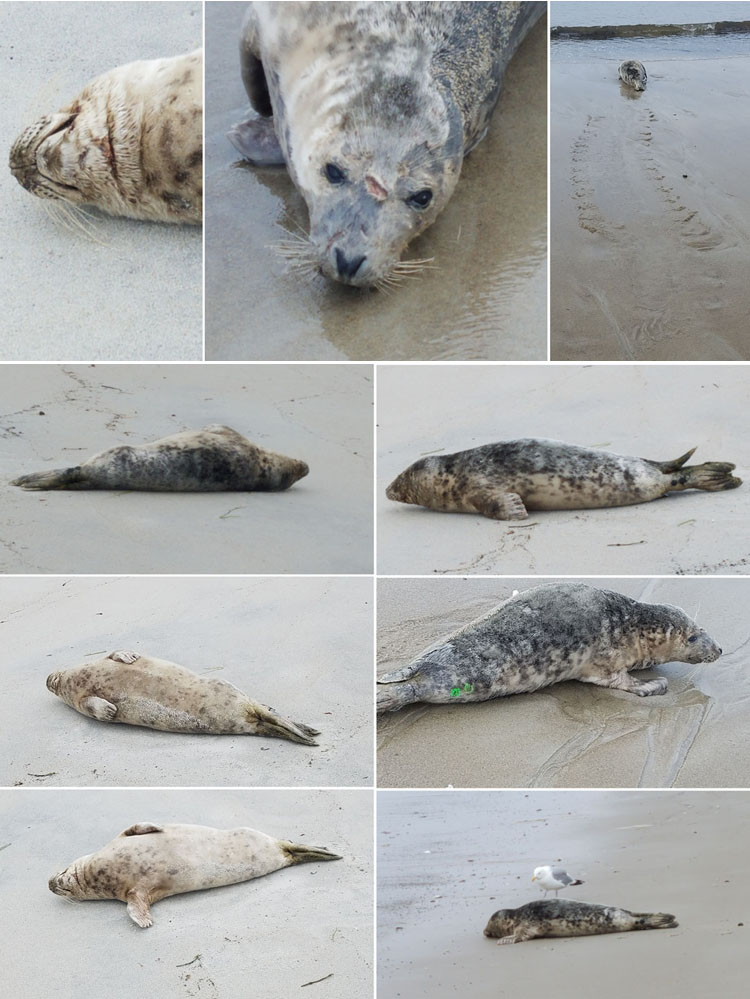
Injured yearling female grey seal resting on Crane's Beach, Ipswich, Mass., July 12, 2021.

MANATEES ARE STARVING TO DEATH IN FLORIDA'S POLLUTED WATER
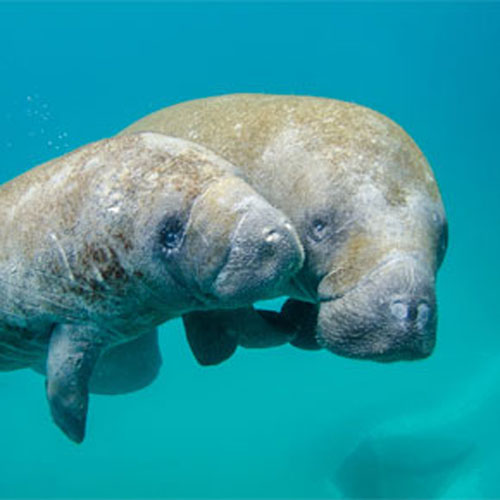
Manatees are starving to death because Florida's water is so polluted.
Things got worse in April when hundreds of tons of algae-fueling nutrient pollutants were released into Tampa Bay, further endangering marine ecosystems and protected species.
So the Center for Biological Diversity took legal action against the state of Florida for using manatee habitat as a dumping ground for polluted wastewater.
Please help their fights for manatees and other imperiled species by giving to the Saving Life on Earth Fund.
For years officials failed to adequately maintain and regulate phosphogypsum stacks and wastewater storage ponds at Piney Point in Manatee County.
Facing the looming catastrophic failure of a Piney Point gypstack, they ordered the discharge of up to 480 million gallons of wastewater into Tampa Bay, violating the Clean Water Act, Resource Conservation and Recovery Act, and Endangered Species Act.
At least 782 Florida manatees have died so far this year, almost 10% of the known population.
And it's not just polluted water putting this species at risk. Manatees continue to be injured and killed by boats at a staggering rate.
The Center for Biological Diversity is on the frontlines working to increase boater safety regulations and practices, so that the growing number of boaters keep manatees safe.
These gentle giants can fully recover and thrive as long as their habitat isn't poisoned and those who joyride in their home pay attention to the threatened species around them.
The Center has fought for years to protect manatees, including lawsuits to secure Endangered Species Act protection for them and to protect these mammals from harmful algal blooms.
To stop the extinction crisis, we all must take bold steps — and stay in the fight, however long it takes.

HELP ORCAS GET THE SALMON THEY NEED
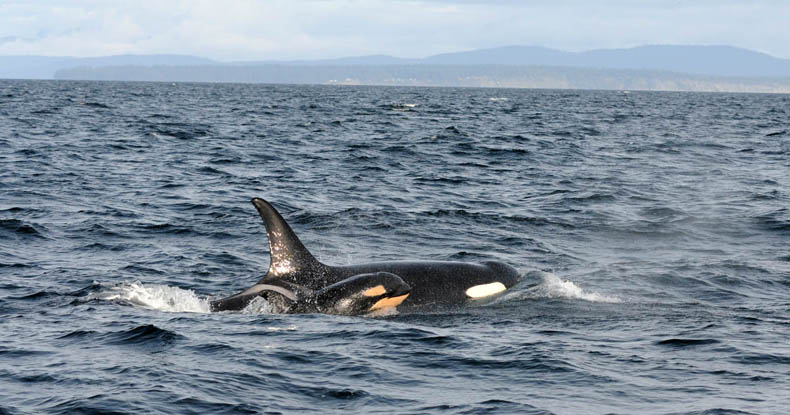
Endangered Southern Resident killer whales are on the brink. They need more Chinook salmon to eat. For the first time, the federal government is considering limiting salmon fishing to help these beloved orcas. But its proposal needs to be stronger.
Speak up for these black-and-white icons of the ocean.
An amendment to the Pacific Coast Salmon Fishery Management Plan would set a base level for Chinook salmon. If the population sank below this level, the fisheries would be restricted — which could help ensure Southern Residents get enough salmon to live on. But the proposed amendment doesn't go far enough to help them recover.
With only 74 whales left, every Chinook salmon matters. Help these amazing orcas: Tell the National Marine Fisheries Service to set strict limits on commercial and recreational salmon fishing.

ISLE AU HAUT LIGHTHOUSE BEING REPAIRED
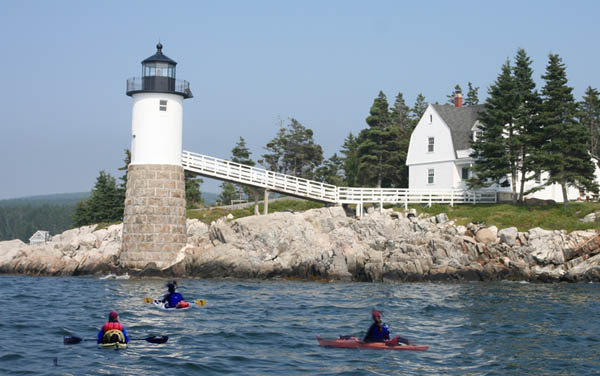
Photo montage by David Eden.
For those who paddle out past Merchants Row to Isle au Haut off Stonington, Maine, you will see some major lighthouse construction going on. The 1907 Victorian Isle au Haut Lighthouse is undergoing renovation, something in the works for more than five years. The renovation began in June and is scheduled to take up to four months. It will include repair and replacement of bricks, mortar, steel girders, repointing the base and exterior and interior coatings, all following Maine State Historic Preservation Office guidelines for the lighthouse, which is on the Registry of Historic Places. isleauhautlighthouse.org

BIOLUMINESCENCE IN FLORIDA
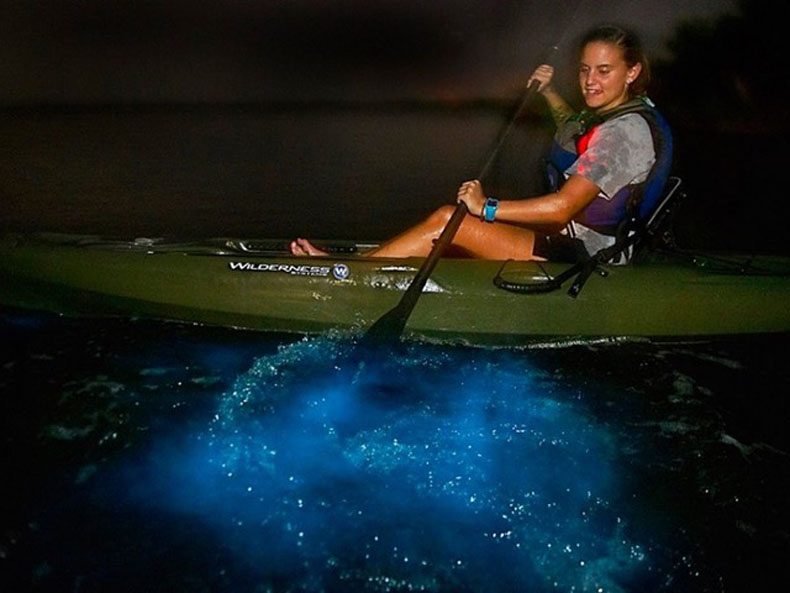
Photo by A Day Away Kayak Tours.
Who knew? But Florida is a hot spot for bioluminescence created by billions of plankton — dinoflagellates. "During the summer, billions of plankton — dinoflagellates — in the water of Mosquito Lagoon emit a blueish-white glow underwater when they are disturbed. That means that every paddle of a kayak creates a wave of glowing light, every wake left by a neighboring boat has a glowing trail and, most excitingly, every splash of a mullet sets off a small light show." So writes Bonnie Gross after taking a trip with A Day Away Kayak Tours in Mosquito Lagoon. Read the article here.
Gross publishes FloridaRambler.com, a great newsletter about the hidden and not so hidden places in Florida to discover. As a paddler she covers many sea kayak venues. Gross went with a local outfitter, but you can do the trip yourself. Put in on the Haulover Canal in Merritt Island NWR. According to the outfitter, the best time to see the bioluminescence is five days after the full moon in warm summer months, when the skies are dark, mid-May through early October.

US HARBORS WANTS TO KEEP YOU PREPARED

We've already gone through Hurricane Elsa, the fifth Atlantic hurricane so far this season. US Harbors has provided this "cheat sheet" to help you understand the conditions/warnings/advisories that NOAA and the U.S. Coast Guard might be sharing.
EXTREME WEATHER CHEAT SHEET & QUICK LINKS
EXTREME WEATHER TRACKING RESOURCES
● Track active hurricanes & tropical storms at the National Hurricane Center
● Monitor real-time coastal flooding conditions and see 48 hour flood forecasts for your area on NOAA's Coastal Innundation Dashboard
WEATHER ADVISORIES
"Advisories", issued by NOAA in case of possible impending, life-threatening weather and water conditions, are classified as "Watches" (issued 48 hours before expected in your area) and "Warnings" (issued 36 hours before expected in your area.) There are generally 4 types of conditions that trigger these advisories:
● Storm Surge — When there is a danger of life-threatening inundation from rising water moving inland from the shoreline somewhere within the specified area. If you are under a storm surge warning, check for evacuation orders from your local officials.
● Hurricane — When sustained winds of 74 mph or greater are expected somewhere within the specified area. NHC issues a hurricane warning 36 hours in advance of tropical storm-force winds to give you time to complete your preparations.
● Tropical storm — When sustained winds of 39 to 73 mph are expected within your area.
● Extreme Wind — For sustained winds of a major hurricane (115 mph or greater), usually associated with the eye wall. These warnings are issued when the winds are expected to begin within an hour. Take immediate shelter in the interior portion of a well-built structure.
LOCAL, STATE, and OTHER RESOURCES
● Your local TV and radio stations, as well as area news websites, all get their weather updates from NOAA.
● NOAA broadcasts marine weather on VHF channel 22A (157.1 MHZ).
● Your state and regional office of emergency management will have local details about evacuations routes, shelters, and other important planning information.
USCG PORT CONDITIONS
The US Coast Guard sets "Hurricane Port Conditions" for major ports when weather advisories indicate sustained gale force winds of 39-54mph/34-47 knots (or above) expected in the following time frames:
● WHISKEY = Predicted to make landfall at the port within 72 hours.
● X-RAY = Predicted to make landfall at the port within 48 hours.
● YANKEE = Predicted to make landfall at the port within 24 hours.
● ZULU = Predicted to make landfall at the port within 12 hours.
Whenever USCG sets a Port Condition, they advise you to:
● Stay off the water. The Coast Guard's search and rescue capabilities degrade as storm conditions strengthen. This means help could be delayed. Boaters should heed weather watches, warnings and small craft advisories.
● Evacuate as necessary. If mandatory evacuations are set for an area, the public should evacuate without delay. Coast Guard personnel and other emergency responders may not be able to evacuate or rescue those in danger during the storm.
● Secure belongings. Owners of large boats are urged to move their vessels to inland marinas where they will be less vulnerable to breaking free of their moorings or to sustaining damage. Trailerable boats should be pulled from the water and stored in a place that is not prone to flooding. Those who are leaving their boats in the water are reminded to remove EPIRBs and to secure life rings, lifejackets and small boats. These items, if not properly secured, can break free and require valuable search and rescue resources be diverted to ensure people are not in distress.
● Stay clear of beaches. Wave heights and currents typically increase before a storm makes landfall. Even the best swimmers can fall victim to the strong waves and rip currents caused by hurricanes. Swimmers should stay clear of beaches until local lifeguards and law enforcement officials say the water is safe.
● Be prepared. Area residents should be prepared by developing a family plan, creating a disaster supply kit, having a place to go, securing their home and having a plan for pets. Information can be found at the National Hurricane Center's webpage.
● Stay informed. The public should monitor the progress and strength of the storm through local television, radio and Internet. Boaters can monitor its progress on VHF radio channel 16. Information can also be obtained on small craft advisories and warnings on VHF radio channel 16.
For more information, usharbors.com

THE MAINE ISLANDS BECKON
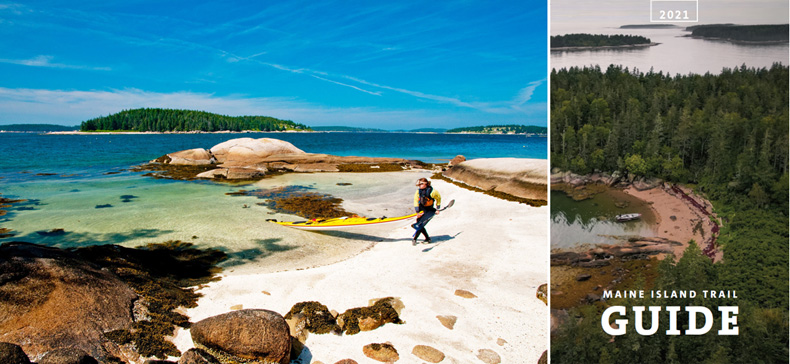
Summer paddling is upon us, and it is time to renew your Maine Island Trail Assn. (MITA) membership. When you renew you get immediate access to the Maine Island Trail App, and for those who renew at $45 or higher, you will receive a Maine Island Trail Guidebook in the mail. As a member, you get a very large array of discounts to local businesses and events like member paddles (everyone loves MITA). Here is the events calendar and to renew your membership go here. See you on the water.

DRIFTWOOD KAYAK

Peter Jones of Driftwood Kayak on Deer Isle, Maine area is back in business after a COVID gap year. Here is what he has to say: "The weather is brilliant, the water is enticing and we're offering one-day guided trips as we've done for the past nine years. We've made one change to accommodate COVID-19. Instead of two- and three-day trips with overnight camping, we'll paddle different routes from different points on the mainland on two or three successive days. And, as in the past, all trips will be customized — one party per trip up to a maximum of four paddlers. We'll of course observe State of Maine guidelines for COVID-19." To book, www.driftwoodkayak.com.

UNCOMMON ADVENTURES COMING BACK TO LIFE

Michael Gray of Michigan-based Uncommon Adventures reports that he is having a crazy year with everything booking up far in advance. Fortunately he ordered new gear and supplies early, so the company's high standards are being met. Because of trips getting booked up for 2021, he has provided dates for 2022 to give people a chance to plan ahead and lock in rates. Book now for trips to Alaska's Otter Coast, Isle Royale National Park, or Florida's 10,000 Islands.
OREGON MAN DROWNS IN MAINE LAKE

The body of Oregon resident Christopher N. Friedrich, 41, was discovered in 30 feet of water ½ mile north of the Swan Lake boat launch in Swanville, Maine on June 14. Friedrich had been reported missing by his fiance on June 8. He had been on a cross-country trip scattering his father's ashes when he disappeared. A local resident reported seeing a kayak floating upside-down on June 6. Some personal belongings were also found floating near the boat. It was not reported whether there was an unused PFD with the other items.
Friedrich's car was found at the boat launch. Search divers hauled behind a dive boat discovered the body. Searchers also used a plane and cadaver-sniffing dogs in the search.
Friedrich, who was a web app developer for the University of Oregon, leaves his fiancee and five children.
|














